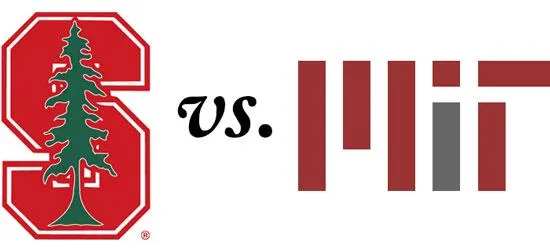Which engineering school—Stanford or MIT—is better?: Beyond being a superhero in the Marvel universe, Tony Stark, popularly known as Iron Man, is a double major in engineering and physics from MIT, where he graduated at the age of 17. Have you ever wondered how Google CEO Sundar Pichai paved his way to success? His path took shape at the Stanford School of Engineering, though. Among national universities, Stanford University is ranked #3 while MIT is ranked #2, according to US News 2024.
Whereabouts
Situated in Cambridge, Massachusetts, just outside of Boston, MIT is primarily focused on scientific and technical research. Its campus is made up of five schools and a college, each of which serves as an urban laboratory for innovation.
Conversely, Stanford’s campus is situated in Palo Alto, which is only thirty miles away from the busy city of San Francisco. Its picturesque surroundings, enveloped in a suburban setting, offer the ideal backdrop for students.
Course Organization
- Engineering School at MIT
Eight academic departments, two institutes, and a vast network of research laboratories are all part of MIT. It provides a variety of degree options, including mechanical, chemical, and aerospace engineering. The focus is on comprehensive education, which includes professional endeavors, interdepartmental cooperation, and cocurricular and extracurricular programs.
- Stanford University’s Engineering Department
With 16 predetermined undergraduate majors and the ability to create a custom path of study, Stanford stands out. Aeronautics, biotechnology, computer science, and materials science are among the diverse fields represented in the department. Its faculty pioneers blended learning classes that combine traditional lectures with interactive learning, providing opportunity for hands-on experience customized to each student’s learning preferences.
Awards for Scholarships
- Engineering School at MIT
The main way that MIT provides financial help is through the MIT Scholarship, an endowment fund and financial need-based grant. This help is given to about 58% of undergraduates, with a median scholarship amount of $63,729 for 2022–2023.
- Stanford University’s Engineering Department
Stanford supports students who want to study music in addition to engineering by providing specialized scholarships like the Engineers in the Arts Scholarship. Applicants who have been formally recognized financially poor by the School of Engineering are eligible to apply for this special opportunity.
Admissions Procedure
- Engineering School at MIT
232 overseas students were enrolled in MIT’s undergraduate program in 2023–2024—a highly competitive acceptance rate of 4%. The goal of the admissions process is to guarantee a varied and active student body by focusing on holistic evaluations that take into account variables other than test scores.
- Stanford University’s Engineering Department
Stanford emphasizes exceptional academic achievement and the ability to make a significant contribution to technology, business, or society, mirroring MIT’s 4% acceptance rate. Departments have different dates and requirements, so each one can evaluate potential graduate students in a unique way.
Activities Outside of the Classroom
- Engineering School at MIT
MIT is a diverse campus with over 450 co-curricular student clubs. Students participate in a variety of activities, such as the Science Fiction Society, the Puppy Lab, and the Laboratory for Chocolate Science. The MIT culture fosters creativity, as seen by the well-known “hacks” carried out by students in accordance with a loose code of ethics.
- Stanford University’s Engineering Department
Numerous student clubs are available at Stanford, such as the Stanford Solar Car Project and the Stanford Pre-Business Association. With almost 25% of its student body involved in Greek life, Stanford creates a vibrant campus environment that is enhanced by its winning athletic teams and Stanford Magazine.
With their individual projects, MIT and Stanford both demonstrate a dedication to having an international impact. The MISTI program at MIT addresses global issues by promoting cross-cultural relationships and global innovation. Stanford’s global engineering program offers internships in a variety of cultural contexts, exposing students to the world.
Students consider more factors than only rankings while choosing between MIT and Stanford. It all comes down to finding the proper match, whether it is Stanford’s serene suburban campus or MIT’s vibrant urban location. Every institution provides a unique and enriching experience that shapes the engineers of the future.

































